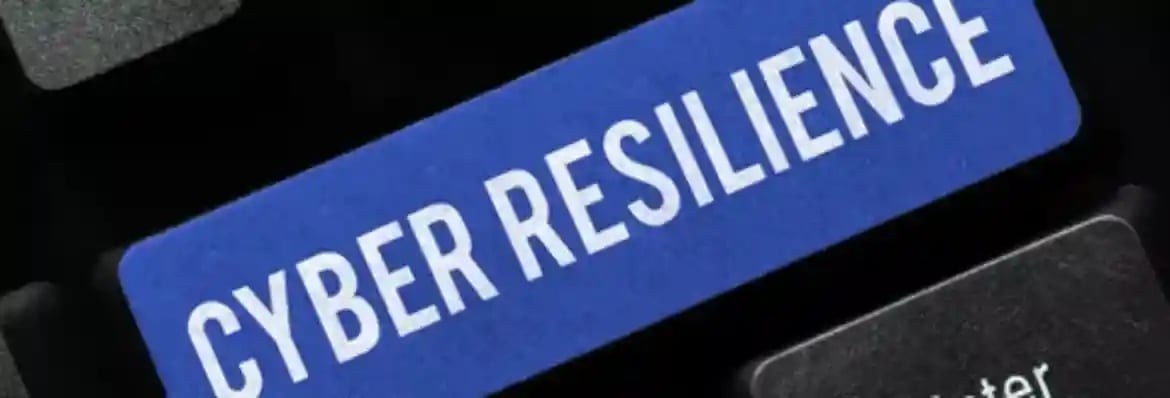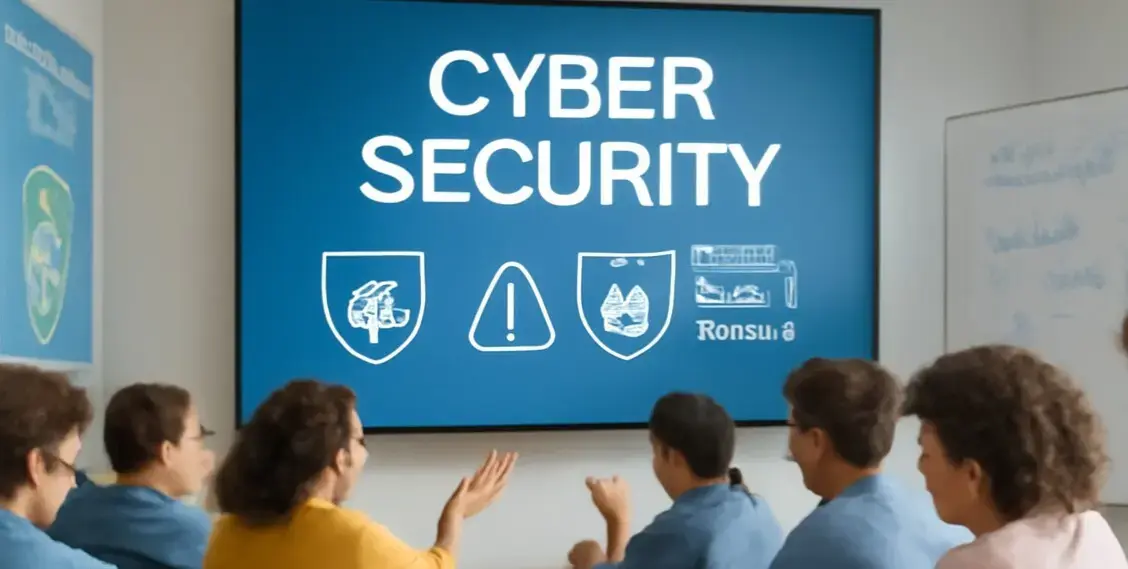How to Enhance Cyber Resilience with Cyber Attack Tabletop Exercises
Date: 29 June 2023

Ransomware infections, data breaches, serious outages due to cyber- attacks - sadly these have become common news items on an almost daily basis. They also cause massive financial and reputational damage in many cases.
Is there a way to prevent them completely? Doesn’t seem so. But is there a way to control the damage and bounce back faster from such events? Absolutely.
Building your cyber resilience over time can greatly reduce the impact of cybersecurity attacks on your business and enable you to protect your business critical operations as far as possible. And Cyber Attack Tabletop Exercises can play a huge role in this quest for Cyber Maturity and Resilience.
In this blog, we will explore the concept of a Cybersecurity Tabletop Exercise, its benefits, and how organisations can leverage them to enhance their cybersecurity posture.
Check out our Cyber Tabletop Exercise Training conducted by the world's top cyber drill facilitators to learn how to run and effective workshop in your organisation.
We cover the following aspects of Cyber Crisis Tabletop Exercises in this article:
- Understanding Cyber Attack Tabletop Exercises
- Benefits of a Cyber Attack Tabletop Exercise
- Best Practices for a successful Cyber Attack Simulation Exercise
Are you serious about bolstering your cyber resilience with Cyber Tabletop Drills? You cannot afford to miss our invaluable resources created by our cybersecurity experts. These are immensely useful tools for conducting your own cyber table top exercise or for getting the most out of an externally conducted one (we always recommend the latter!)
- The Top Cybersecurity Tabletop Exercise Scenarios - The most comprehensive & deeply researched list of Cyber Attack Scenarios, Asset Categories to protect and Threat Actors to watch out for!
- Data Breach Tabletop Exercise Template - A ready-to-use, customisable template that you can use to build your cyber table top exercise today!
- Cyber Tabletop Exercise PPT - User-friendly, readymade cybersecurity tabletop exercise PPT created by the world's leading tabletop exercise cybersecurity facilitator.
Understanding Cyber Attack Tabletop Exercises
A cyber crisis tabletop exercise is basically a simulated attack scenario-based exercise. It brings together key stakeholders from various organisational departments to discuss and practise their hypothetical response to the attack scenario.
Usually, these exercises are best conducted by an external, experienced facilitator. There are two main reasons for this:
- The professional facilitator has worked with multiple organisations across industries and geographies. The perspective that they can bring to the simulated attack scenario will typically be unmatched by anyone internally. The fact that they do this for a living and therefore their scenario creation will be detailed, professional and nuanced goes without saying.
- They’re a third party - free of bias to any department, not heavily invested in the existing cybersecurity protocols that have been put in place, completely neutral. Their outsider’s, objective view of the way the team would hypothetically respond to an attack scenario is invaluable. Their opinions and insights on your existing cybersecurity policies, plans and procedures will also be completely impartial and brutally honest.
The exercise, itself, typically involves participants discussing and strategizing their actions in response to the unfolding scenario. The expert facilitator will usually create an atmosphere of panic and chaos and put the participants under pressure. This is simply with the aim to replicate the war zone environment that a cyber attack usually leads to.
The exercise then, effectively brings out and highlights the following:
- How well-versed the stakeholders are with the existing Incident Response Plans and other cybersecurity artefacts (checklists, policies, procedures) of the organisation.
- How well they understand their individual roles and responsibilities in the event of a cybersecurity incident.
- What are the existing gaps in the current cybersecurity plans, policies and procedures.
- What are the organisational cybersecurity strengths and weaknesses overall.
- What technology solution gaps exist currently.
- Which staff members could use deeper training and orientation in cybersecurity and Cyber Incident Planning and Response.
- Whether you might need help from external cybersecurity experts and/or Incident Response Retainers during an actual event.
Benefits of Cyber Attack Tabletop Exercises
We’ve taken a cursory look at what a Cyber Attack Simulation Exercise can achieve. Here are some more detailed benefits of the Cyber Attack Tabletop Exercise and how it can help bolster your overall cyber resilience:
- Identification of Gaps and Weaknesses: Tabletop exercises provide a controlled environment for organisations to identify potential vulnerabilities in their existing cybersecurity infrastructure, policies, and procedures.
By simulating realistic attack scenarios, the facilitator can help you see the existing weaknesses that might otherwise go unnoticed and help you understand what proactive measures you can take to address them.
If you realise that you need to bolster your existing cybersecurity posture and maturity, you may consider enlisting the help of our Virtual Cyber Security Specialists. They can help you review and update your existing plans, policies and documents, assist in conducting breach readiness assessments and even achieve your compliance goals. - Testing incident response plans: Cyber attack tabletop exercises provide the best possible opportunity to test the effectiveness of your cyber incident response plans. Not only do participants get a chance to practise the execution of their response strategies, they also help you identify bottlenecks, and refine incident response processes.
This enables the participants to fine-tune their response and ensure a more efficient and coordinated response in the event of an actual cyber attack.
But most importantly, regular testing through tabletop exercises helps build muscle memory for the participants. If they rehearse the incident response enough times, when an actual incident occurs, they’ll be responding like it’s second nature to them. This can really help cut stress and mistakes in a very chaotic situation. - Enhancing communication and collaboration: Tabletop exercises facilitate cross-departmental collaboration and communication among key stakeholders.
Participants from IT, legal, human resources, public relations, and executive leadership can come together to understand each other's roles and responsibilities during a cyber attack.
This collaborative approach promotes a better understanding of the organisation's overall cybersecurity posture and encourages teamwork in addressing potential threats. - Building a culture of cybersecurity awareness: Tabletop exercises play a crucial role in fostering a culture of cybersecurity awareness within the organisation. By involving employees from different departments, these exercises create a shared understanding of the importance of cybersecurity and the role each individual plays in maintaining a secure environment.
This increased awareness can lead to more vigilant behaviour and improved adherence to security protocols throughout the organisation.
Best Practices for Conducting Cyber Attack Tabletop Exercises
- Define clear objectives: Clearly define the objectives and desired outcomes of the tabletop exercise. Whether it is testing incident response plans, evaluating the effectiveness of communication channels, or identifying vulnerabilities, having specific goals ensures the exercise remains focused and meaningful.
- Develop realistic and detailed scenarios: Design scenarios that are actually relevant to your organisation and organisational context. The threats discussed should be those that could actually impact your business and its most critical assets. This also enables participants to engage with the exercise more effectively and draw practical insights from the experience.
At Cyber Management Alliance, our expert facilitators are known to spend a lot of time with the key point of contact from the client’s side. We take time to understand the business, the various organisational functions and work with the client representative to come up with a scenario that will actually hit home for the participants. - Choose the stakeholders carefully: Involve individuals from different departments and levels of seniority to gain a comprehensive understanding of the organisation's cybersecurity preparedness. This diversity helps uncover different perspectives, identifies communication gaps, and highlights areas where coordination is crucial.
If you want a more focussed approach, then you can opt for Cyber Tabletop Exercises that are tailored to specific groups of participants. For example, we run different types of workshops for technical audiences, the executive and also an operations-focussed tabletop exercise. - Encourage open and constructive discussions: Foster an environment where participants feel comfortable sharing their insights, concerns, and ideas. Encourage open discussions to facilitate knowledge sharing, collaboration, and the exploration of alternative approaches to addressing cyber threats.
- Document lessons learned: After the exercise, the facilitator shares a detailed report or Executive Summary with their observations from the exercise and how each participant contributed. This report contains critical key takeaways and lessons learned.
This executive summary serves as a valuable resource for future reference, enabling the organisation to implement necessary improvements and measure progress over time.
Conclusion
Cyber attack tabletop exercises are indispensable tools for organisations seeking to enhance their cybersecurity resilience to attacks.
By simulating realistic attack scenarios and promoting collaboration among key stakeholders, you can identify your organisational strengths and weaknesses. These exercises are the ideal test of your incident response plans and also help you improve communication channels, and foster a culture of cybersecurity awareness.
By investing time and resources in these exercises, you can significantly strengthen your ability to respond effectively to cyber threats, reducing the potential impact of attacks and safeguarding your critical assets.






.webp)
.webp)
.webp)
